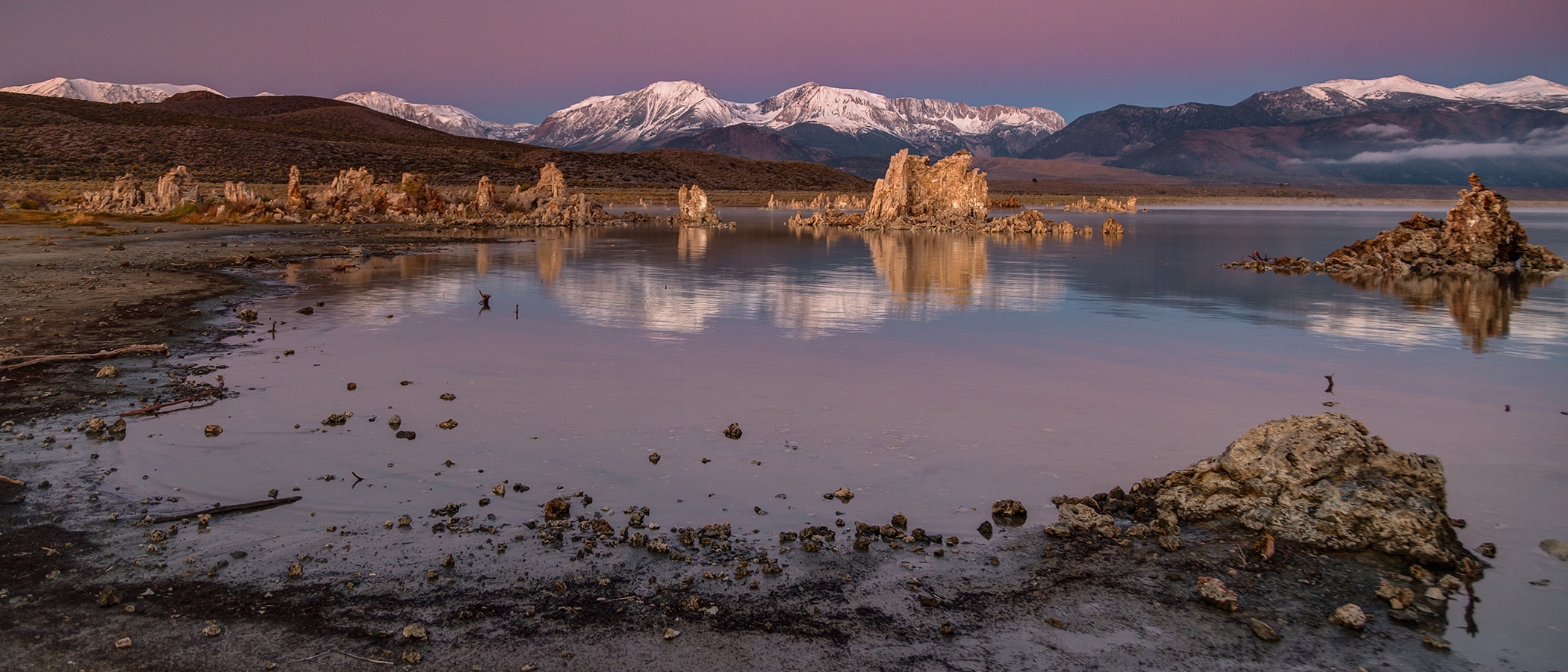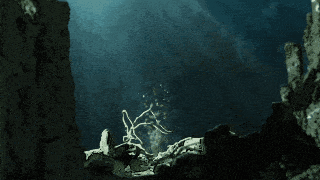
Examine the tufa in front of you. What does it remind you of? What does it feel like?
Tufa—from the Latin tōphus, meaning “porous rock”—forms underwater. Underneath the lake there are fractures which allow calcium-rich spring water to seep through the lake bottom. This calcium-rich freshwater then mixes with the carbonate-rich lake water to form calcium carbonate, or limestone. This is the same composition as stalactites and stalagmites found in caves, but tufa can form much faster than these formations, sometimes growing inches in a few days.
Be sure not to climb or stand on the tufa towers or take any tufa home so others can continue to enjoy this beautiful and fragile landscape.
Since these towers were once completely underwater, it begs the question—why is the lake so much lower today? In 1941, Los Angeles Department of Water & Power began diverting water from four of the freshwater streams that feed Mono Lake. Between 1941 and the early 1980s, the lake dropped 45 vertical feet, losing half its volume and doubling in salinity. Luckily, the water story does not end there.
Continue toward the lake, stopping where the wooden boardwalk begins.
Top photo by Jeff Sullivan.

